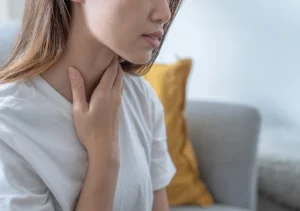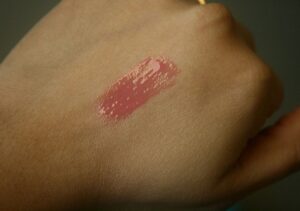Microdosing is a method of dosing cannabis which allows you to reap its medical benefits without getting high (or experiencing any side effects). Here’s all you need to know.
Nowadays, there are a couple of big trends among medical cannabis consumers:
One of them is using high CBD products, since cannabidiol (CBD) diminishes the head high produced by THC. It also has numerous health benefits when consumed as a solitary compound.
The other trend is a special approach to consuming cannabis, which was previously associated only with psychedelic substances—microdosing.
The premise behind microdosing is simple:
By administering very small doses of cannabis it’s possible to relieve symptoms of many conditions while avoiding the psychoactive and intoxicating effects of tetrahydrocannabinol (THC).
Basics of microdosing
Microdosing is a method of consuming cannabis in the smallest possible (but still therapeutically beneficial) doses, in order to avoid getting high or experiencing side-effects of cannabis.
Of course, most cannabis enthusiasts don’t consider the THC-induced high as something negative—quite the contrary—but some users have a tough time adjusting to these novel sensations cannabis produces. Microdosing is perfect for these types of users.
Microdosing originated in psychedelic drug research, and it was initially a way to administer low doses of LSD and psilocybin mushrooms for therapeutic purposes.
As of recently, psychedelic substances are being explored for their potential in treating clinical depression, as well as boosting creativity.
So, if we can successfully microdose psychedelics to treat depression why can’t we do the same with cannabis?
Hence, microdosing cannabis refers to taking small and precisely measured amounts, in a carefully planned schedule.
Some experts think that overloading the system with THC is not always the best approach, especially if we take into account the subjective effects of cannabis.
Consuming too much THC at one time can overwhelm the cannabinoid (CB) receptors in the body and overstimulate them—this is what causes the two worst side-effects of cannabis: Short-term anxiety and paranoia. Luckily, this is only temporary and isn’t otherwise dangerous or toxic to the body.
Let’s take anxiety as the primary concern associated with too much THC.
In smaller doses, cannabis is used for treating both anxiety and depression but when too much THC is consumed in one sitting it can promote anxiety and even cause full-blown anxiety attacks and paranoid episodes.
Microdosing provides a solution to biphasic effects of cannabis and moves it one step closer to being completely acceptable in conventional medicine.
Not sure how to dose CBD? Download Droppy CBD Oil Dosage Calculator– the app that calculates your perfect dosage.
How to microdose weed (THC)?
Achieving the perfect dose depends on several factors: Your previous experience with cannabis, current tolerance to THC, and the number of your endocannabinoid receptors.
Starting low and increasing the dosage slow is imperative. Here’s how it’s usually done:
Our friend Dr. Dustin Sulak (who successfully treated over 18.000 patients in the US with medical cannabis) suggests that the starting dose should be either 1 or 2 mg of THC.
From there, one would have to incrementally increase the daily dosage until the desired therapeutic effect is achieved.
For detailed instructions on how to dose cannabis (including day-by-day dosage charts for THC and CBD products) feel free to download Greencamp’s complete cannabis dosage guide, which was made with the help of Dr. Sulak.
Microdosing cannabis concentrates
There are 10 milligrams (mg) in one milliliter (ml) of a THC concentrate, so in this case the starting dosage would be one-tenth of a milliliter.
Two drops of THC liquid extract equal to 1 mg—this should be the starting dosage.
In very rare cases, it’s possible for inexperienced users with an extremely low tolerance to THC to feel a minor head buzz with this amount. In that case, try taking one drop of a THC concentrate for several days until you build up your tolerance, before increasing it to 2 drops per day.
When taking the starting dosage wait for about 30 to 60 minutes to see if you feel anything. If you don’t get high, that’s perfect. This means that you’ve got it right.
If you start feeling anything strange in your head and body, you overdid it and you should go back to one of the previous steps and build up your tolerance first.
To reach the optimal therapeutic dose, increase the daily dosage gradually by adding a drop to your regimen every few days.
Knowing your optimal dosage is simple—Stop increasing the dosage as soon as you you start feeling psychoactive effects.
Once you start becoming intoxicated, just take one drop less next time and see if that is your optimal dosage.
Microdosing cannabis flowers (with smoking and vaping)
If you can’t find high-quality cannabis concentrates, or would simply like to microdose cannabis flowers administered through smoking or vaping, here’s how to do it:
Take one puff and hold it in for a few seconds before exhaling. Wait for about 10 minutes to see if this dosage affected you. If not, repeat the puff procedure.
Don’t forget to be patient—To determine your optimal dosage, and especially if you’re doing it for the first time, make sure you don’t draw too often and too much.
Microdosing cannabis edibles
If you’ve got yourself a delicious edible from a local dispensary, find its THC levels somewhere on the label (or ask your budtender for more information on the product).
Split the edible into even pieces so that each piece contains 1 mg of THC.
Because the edible must be digested in order for cannabinoids to get released into the bloodstream, determining if this is the appropriate dose for you will take much longer than any other type of consumption method.
It takes about 45 to 90 minutes for a cannabis-infused food to go through the digestion process. So if you do not feel anything after 90 minutes or so, feel free to increase the dosage until you reach your optimal level.
Which conditions are suitable for microdosing?
Cannabis is used for treating numerous different conditions, and not all of them can be treated with the exact same type (or dosage) of cannabis.
Because of this, some conditions are more suitable for microdosing, particularly those that require medicating throughout the day.
For example, you cannot treat anxiety in the same way that you would a migraine. The dosing procedure is completely different, as well as the frequency of use.
Stress, anxiety, depression and chronic pain are most often treated by microdosing. A lot of people have also started using very small doses of cannabis to improve their sleeping and focus.
For example, low doses of THC can relieve depression, while higher doses may aggravate it.
When it comes to microdosing weed for depression and anxiety, here’s what you should do:
Choose the right strain. Avoid high-THC strains and go for for 1:1 THC to CBD strains and products.
High CBD strains are also a good idea for these conditions.
If you’re not sure how to choose a medical strain in Canada, you can always use our Strainblazer tool which helps you browse through all strains that are currently on sale in the medical cannabis market.






Ryan J Griswold February 28, 2019 at 10:42 pm
Thank you very much for the info!!
Marta March 1, 2019 at 11:50 am
Realmente nunca encontre un sitio tan magnifico y que expliquen tan detalladamente todo Les agradezco todo Soy odontologa muy estudiosa en cannabis
Luka March 1, 2019 at 12:12 pm
Muchas gracias Marta! :)
Helena March 7, 2019 at 2:54 pm
No problem, Ryan :)
Marc Lemay March 28, 2019 at 4:36 pm
Helena—Thanks for this informative article. Microdosing is promissing! There's an error though: "There are 10 milligrams (mg) in one milliliter (ml) of a THC concentrate". One milliliter weighs 1,000 milligrams, not 10 (this is based on the density of water, where one liter weighs exactly 1,000 grams). The question is really how much THC is in each milliliter. Elixirs (oil-based sublingual tinctures) contain anywhere from 0.7 mg to (the highest I've seen) 65 mg THC per milliliter (or per dropperful, if it's graduated up to one ml). The lower concentrations will be found in 8:1 and 4:1 CBD:THC ratio tinctures, and are more appropriate for microdosing.
Dennis July 18, 2019 at 5:45 am
She meant that there are 10 mg of THC in 1 ml of the concentrate that she was referring to, so at 20 drops per ml, you would get 1 mg of THC by taking two drops. Different concentrates or tinctures are compounded differently, so you have to figure out your own dosage based on the product that you are actually using.
Peter June 3, 2021 at 3:25 pm
I think he is from the USA and means 99% concentrates. how much that is per ml I don't know
Jenn May 2, 2019 at 5:20 am
Thanks so much for the info. I did not know anything about microdosing and I know I’m dosing to high on my cannabis I get from my local dispensary. I get bad paranoia and anxiety and that’s what I’m trying to treat. Among other things so now I need to learn exactly how to microdose myself properly.
Jalbe July 7, 2019 at 2:05 pm
Microdosing is clearly a way for users to establish a regimen along the lines of using conventional medications. The real convenience is knowing that “X” cannabis dose is an event similar to taking a known values of commercial pharmaceuticals at certain time frames to control the astounding capabilities of cannabis treatment.
Andrew August 6, 2020 at 9:38 pm
This post is misinformative. For one thing, "concentrate" is not the right term. Concentrates, in cannabis terms, refer to substances that are highly concentrated with THC. Distillate and Honey, for instance, are both measured in ml and are usually 60-75% and 80-95% THC respectively. This would mean there is 800-950mg of THC in 1ml of distillate. The correct terms for what you're referring to are elixir or tinctures. These are carrier oils such as MCT oil that have been infused with cannabis. And even then these are all different amounts of THC per ml depending on how much THC they actually put into the product and how much oil that THC is infused in. This information you've provided is based specifically on a tincture/elixir that is either 15ml and 150mg THC, 30ml and 300mg THC, or 60ml and 600mg THC, given those are the most common size. I think you need to do a little more research before you start posting stuff like this.
deric smith October 21, 2020 at 9:30 pm
By my figures the recommended microdose,2mg is still quite a pile and enough for 3 hits which will get you off quite well. Not what you want for microdosing.
Anon January 21, 2022 at 4:06 am
Take a look at the Dosist brand weed pens, they give a very consistent 2.5mg per puff so they're easy to regulate!